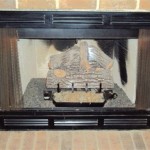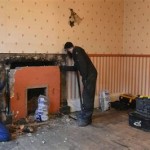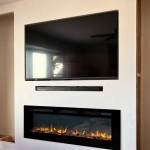Gas and Wood Fireplaces: A Comparative Analysis
Fireplaces have long been a centerpiece of homes, providing warmth, ambiance, and a focal point for gatherings. Modern homeowners are presented with a choice between two primary fuel sources: gas and wood. Both gas and wood fireplaces offer distinct advantages and disadvantages, making the decision a complex one that requires careful consideration of individual needs and priorities.
This article provides a comparative analysis of gas and wood fireplaces, exploring their key features, benefits, drawbacks, installation requirements, and ongoing maintenance considerations. Understanding these factors will enable readers to make an informed decision about which type of fireplace best suits their specific circumstances.
Fuel Source and Combustion Efficiency
The fundamental difference between gas and wood fireplaces lies in their fuel source. Wood fireplaces utilize solid wood as the fuel, requiring manual loading and ignition. The combustion process relies on a sufficient supply of oxygen to effectively burn the wood. The efficiency of wood fireplaces can vary significantly depending on factors such as the type of wood used, its moisture content, and the design of the fireplace itself.
Gas fireplaces, on the other hand, use natural gas or propane as fuel. These fuels are delivered through a piped system, eliminating the need for manual handling. Gas fireplaces ignite electronically or through a pilot light, offering immediate and consistent flame. Gas fireplaces generally exhibit higher combustion efficiency compared to traditional wood fireplaces, converting a larger percentage of the fuel's energy into usable heat.
The efficiency of a fireplace is often measured by its AFUE (Annual Fuel Utilization Efficiency) rating. A higher AFUE rating indicates greater efficiency. Modern gas fireplaces often boast AFUE ratings exceeding 70%, while traditional wood fireplaces may have ratings below 20%.
The type of wood burned in a wood-burning fireplace drastically affects its efficiency and the amount of heat it produces. Hardwoods like oak, maple, and ash tend to burn hotter and longer than softwoods like pine and fir. Seasoning the wood, which involves drying it for several months, is crucial for efficient burning and reduced creosote buildup.
Gas fireplaces offer a more consistent and predictable heat output. The flame height and heat intensity can typically be adjusted easily using a control knob or remote. This provides greater control over the temperature of the room.
Environmental Impact and Air Quality
The environmental impact and air quality considerations are significant factors when evaluating gas and wood fireplaces. Wood fireplaces can contribute to air pollution through the emission of particulate matter, carbon monoxide, and other harmful pollutants. The amount of pollution generated depends on factors such as the type of wood burned, the efficiency of the fireplace, and the adequacy of ventilation.
Gas fireplaces generally produce lower levels of air pollutants compared to wood fireplaces. The combustion of natural gas or propane results in fewer particulate emissions. However, gas fireplaces still contribute to greenhouse gas emissions, although typically less so than wood fireplaces. Properly maintained and vented gas fireplaces are designed to minimize the risk of carbon monoxide poisoning.
Many jurisdictions are implementing regulations to control emissions from wood-burning appliances. These regulations may include restrictions on the types of wood that can be burned, requirements for installing high-efficiency wood stoves, and limitations on the use of wood-burning appliances during periods of high air pollution.
The environmental impact of gas fireplaces can be further reduced by using propane as the fuel source. Propane is a cleaner-burning fuel than natural gas, producing fewer greenhouse gas emissions. Additionally, propane is often sourced domestically, reducing the carbon footprint associated with transportation.
Carbon neutrality is sometimes claimed for wood-burning fireplaces because trees absorb carbon dioxide during their growth cycle. However, this argument overlooks the immediate release of carbon dioxide during combustion and the impact of deforestation on carbon sequestration.
Aesthetics, Convenience, and Maintenance
Aesthetics, convenience, and maintenance are key considerations for homeowners choosing between gas and wood fireplaces. Wood fireplaces offer a traditional aesthetic, with the crackling sound and flickering flames creating a cozy and inviting atmosphere. However, wood fireplaces require manual loading of wood, tending the fire, and cleaning up ashes.
Gas fireplaces offer greater convenience and ease of use. They can be ignited and extinguished with the push of a button or the flip of a switch. The flame height and heat output can be easily adjusted. Gas fireplaces typically require less maintenance than wood fireplaces, with no need for hauling wood or cleaning ashes.
The aesthetic options for gas fireplaces have expanded significantly in recent years. Modern gas fireplaces can mimic the look of a traditional wood-burning fire with realistic-looking artificial logs and ember beds. Some gas fireplaces feature decorative glass or stones instead of logs, offering a more contemporary look.
Wood fireplaces require regular maintenance, including cleaning the chimney to remove creosote buildup. Creosote is a highly flammable substance that can accumulate in the chimney and pose a fire hazard. Regular chimney cleaning is essential to ensure safe operation of a wood fireplace.
Gas fireplaces also require periodic maintenance, including inspecting the gas lines, burner assembly, and venting system. A qualified technician should perform these inspections to ensure proper and safe operation. The pilot light may also need to be cleaned or adjusted periodically.
Some homeowners prefer the natural aroma of burning wood, which cannot be replicated by gas fireplaces. The tactile experience of handling wood and building a fire is also a draw for those who appreciate traditional aspects of a wood-burning fireplace.
Gas fireplaces offer versatility in terms of installation options. They can be installed in a wide range of locations, including homes without existing chimneys. Ventless gas fireplaces are available, but these models require careful consideration of ventilation requirements to ensure safe indoor air quality.
The choice between gas and wood fireplaces ultimately depends on individual priorities. Wood fireplaces appeal to those who value the traditional aesthetic and experience of burning wood, while gas fireplaces offer greater convenience, efficiency, and ease of use. Considering these factors carefully will help homeowners choose the best fireplace for their needs and preferences.

Wood Fireplaces Gas Conversion That Counts

Fireplaces Inserts Wood Gas Fireplace Xtrordinair

Stanford Wooden Fireplace Package With Pureglow Bauhaus Gas Fire Direct Fireplaces

Want To Convert Gas Wood Fireplace Full Service Chimney

Gas Stoves Vs Wood Burners The Fireplace Studio

Can A Wood Burning Fireplace Be Converted To Gas The Flame Company

Gas Vs Wood Fireplaces Gaithersburg Md Fireplace Service

Gas Stoves Log Burners Stove Fireplaces Fireplace Warehouse

Gazco Chesterfield 5 Gas Stove

Should You Convert Your Cabin Fireplace From Wood To Gas
Related Posts








